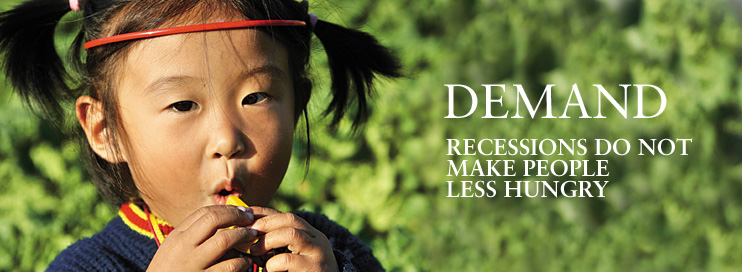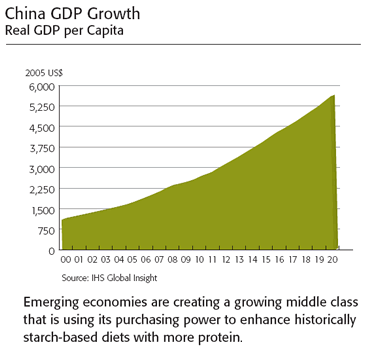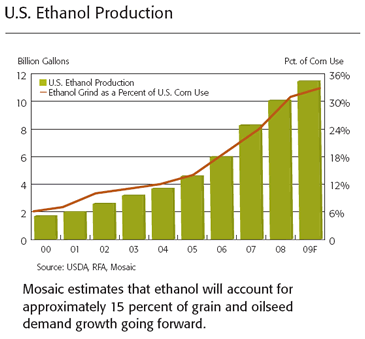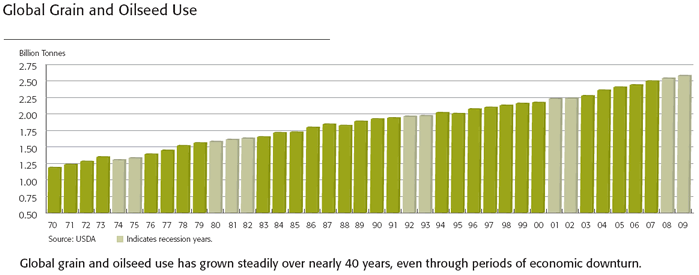
Many things contract during a recession – industrial output, employment and consumer spending on discretionary items, to name a few. There is no evidence, however, that appetites shrink. Indeed, grain and oilseed use continues its steady and predictable march upward even during recessions. Global demand increased 1.9% during the last severe downturn in 1980-1982, and the latest U.S. Department of Agriculture estimates indicate that grain and oilseed use will increase 1.8% during the crisis in 2008-2009. In fact, global grain and oilseed use has declined in only three years since 1970 and, in each case, the drop resulted largely from a poor harvest rather than contracted demand.

On the contrary, the world's appetite continues to swell due to steady population growth and increases in income, especially in the large and rapidly developing countries in Asia. Global grain and oilseed demand has increased at an annual rate of 2.1% this decade. There are ample reasons to believe that this trend will continue. Start with this fact: the world must feed about 75 million additional mouths each year. World population will increase from 6.8 billion today to 7.6 billion in 2020 and to more than 9.0 billion by the middle of this century.
Population growth is just part of the story. Economic growth also creates a more affluent population that buys more protein-rich and grain-intensive foods. Despite the current global economic downturn, countries such as China and India continue to grow at healthy rates. Real GDP per capita in China has increased from about $1,100 per person at the beginning of this decade to almost $2,500 today, and per capita GDP is projected to more than double to $5,600 by the end of the next decade.
Emerging middle-class households spend a large portion of their additional income to upgrade diets. For example, annual per capita meat consumption in China has increased more than seven kilograms during the last 10 years. Yet meat consumption in China is still only about one-half that of Australia. In India, annual per capita consumption of dairy products has increased more than six kilograms during the same period, but dairy consumption in India still is less than one-half that of Europe.

A more prosperous world also requires more electricity for homes, more fuel for transportation and more power for industry. The still-developing biofuels industry faces a number of short-term challenges, but there is little doubt that biofuels will play an important role in meeting long-term energy needs. That has significant implications for agricultural commodity markets. U.S. ethanol producers will grind about one-third of the 2009 corn crop into ethanol and feed co-products. The increase in the U.S. ethanol grind alone accounted for about one-fifth of the growth in global grain and oilseed use during the last five years.
The links between more food, more energy, more crop yield and more crop nutrients are clear. Agribusiness and world leaders are seeking solutions to growing food demand. As they do so, they will see a strong link between the new meat markets in Beijing and the vast potash reserves in Saskatchewan and the phosphate deposits in Florida. Mosaic stands ready to help the world grow the food it needs.







